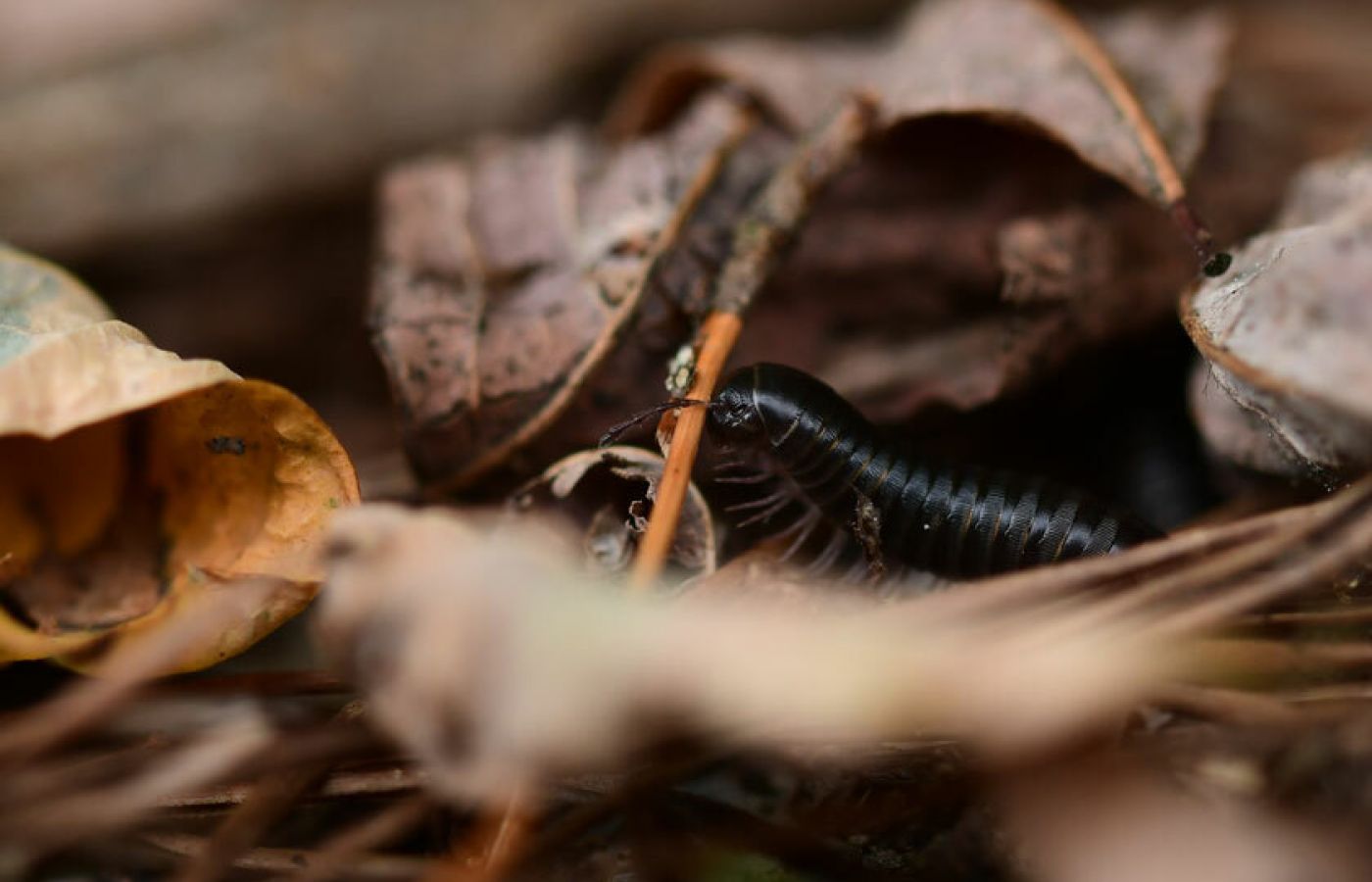
This is due to the often seasonal rain showers that stimulate the breeding cycle where the adults move to the surface and mate, with each female millipede able to lay 2-300 eggs yearly. That’s a big family and lots and lots of pairs of shoes!
Your millipedes are better travelled than you are!
The shiny black millipedes you are familiar with seeing in your garden are from Portugal and Spain. Okay, maybe not those exact ones in your garden, but they were introduced (by accident) to Australia in the 50's, most likely through shipping, and now they are part of the ecosystem.
Millipedes native to Australia are usually brown or lightly striped and don’t multiply in the enormous numbers that their Portuguese counterparts do - must have something to do with the lack of Mediterranean passion!
Millipede facts
Millipedes are vegetarians and somehow, this makes us feel better about them. Of course, knowing they aren’t going to bite humans helps too. However, they have a somewhat unpleasant odour when crushed and are also unsightly in large numbers. The upside is they consume leaf litter and help break down the soil. It’s only when they reproduce in huge numbers that they can become a real pest.
Millipedes don’t walk very far, moving only a maximum of a couple hundred metres a year, according to the Department of Primary Industries and Regions (PIRSA). So managing infestations is vital as the millipedes will return year after year to the same area if not discouraged. In fact, they are there all year round, just less noticeable across the winter months.
Do I need a professional millipede pest control treatment?
When millipedes are getting out of control, and you’re noticing them in large numbers or invading your home, it’s best to book a simple professional millipede pest control treatment to get on top of the situation.
Our eco millipede control treatments are fast and effective, designed to kill the millipedes on contact. The spray leaves a residual insecticide that will assist in discouraging any further millipedes from the area for a few weeks, depending on rain or weather conditions. We find the treatment significantly reduces the number of millipedes around the house. If your property is particularly leafy, wet and prone to infestations, we recommend a 6-monthly treatment to keep them under control.
How can I manage my millipede control?
There is plenty you can do to discourage millipedes around your house. Of course, they will always be present, but when you realise that the ones you see are around two years old, you realise that you can do quite a bit to discourage them before they become a problem.
Manage garden beds around the house
By ensuring the garden beds are well tended without huge amounts of dead leaves, weeds and overgrown sections and replacing soil with mulch or smooth pebbles that are not appealing to millipedes, you can easily discourage them from making your garden their permanent home.
Make it difficult for millipedes to get inside
We often receive calls from people when they find millipedes inside the house. It’s important to understand that millipedes don’t want to live inside our homes, and the reason they enter is that much like many insects, they are attracted to lights. Turn off external lights around the house at night and give your home a once-over, looking for cracks in window frames or gaps under doors and sealing them up. These small changes together will discourage millipedes from entering the house.
If you’re sick of playing skittles with spiralled-up millipedes or notice the rows of shoes growing rapidly at your back door, contact Spiderman SE today to make a time for your professional pest treatment.

